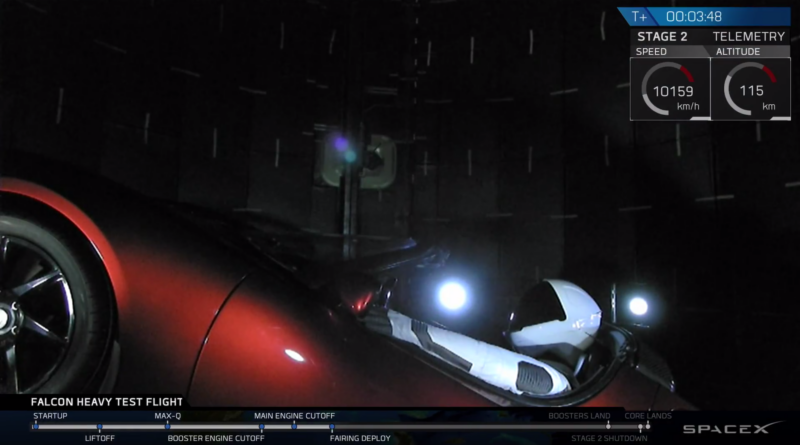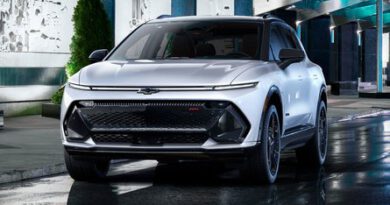Tesla Achieves Escape Velocity – An Analysis of the Annual Numbers for 2021
Tesla has published its figures for 2021, underpinning the fact that the company has established itself permanently. Two years of profits in a row and average annual production and sales increases of 69 percent show that the demand for electric mobility is unbroken, the market is not saturated and the start has only just been made
By 2021, Tesla has also recouped almost all of the losses accumulated in the past. There is only $33.9 million left to make up (and Tesla has probably already done that in the first days of 2022).
Annual losses/profits of Tesla from 2009 to 2021
But above all, Tesla is showing all other car manufacturers that you can make money with electric cars. A lot of money, in fact. Tesla thus refutes Stellantis CEO Carlos Tavares’ whining about electric mobility, which can only work with subsidies, or the BMW board members who still think that customers don’t want electric cars. Even so-called experts like Fritz Indra were wrong in their predictions about Tesla and electromobility in pretty much all respects.
Cash reserves and liabilities
Tesla’s cash reserves of $17.5 billion should also tide it over in the longer term, especially if we look at its liabilities and debt. A breakdown from November 2020 (i.e., a year ago) shows these of the various automakers.
Debt and liabilities of some automakers in November 2020 – Source
Part of the debt comes from car financing for customers who pay it off and is even a profit maker for the manufacturers themselves. But not all of it. In addition to the pension obligations, there are also actual liabilities that can be quite substantial.
Debt and liabilities compared to the market value of some car manufacturers in November 2020 – Source
If one compares these with the market valuations of the companies, which, it should be noted, have increased massively for Tesla, for example, since November 2020, then the drama of the debts and liabilities changes for some manufacturers in a very unfavorable way. Low market valuations do not allow for large capital increases to finance, for example, the high investments for the transition to future technologies such as electromobility or autonomous driving, without drastically interfering with the existing share ratios.
An example of this is Tesla, which sold less than one percent of shares a few months ago at a market valuation of $800 billion, bringing five billion dollars into its coffers. If a manufacturer like Daimler, with one-tenth of Tesla’s market valuation, wanted to raise such a sum on the capital market, then 10 percent of shares would have to be allocated, with the accompanying shifts in shareholdings and voting rights.
Profit Marge
The 14.6 percent profit margin mentioned in yesterday’s shareholder report, which Tesla notes is the highest of any mass manufacturer, also shows the grasp of scale and the advantages of electric cars. They simply have fewer parts to assemble, and some key components like the battery cells can be produced in a highly automated fashion. Combined with innovations such as the gigapress, which eliminates hundreds of parts and the associated steps and produces just one part, shows the innovative power and potential to scale up and incorporate improvements even in existing manufacturing processes.
The fact that Tesla has managed to increase its profits almost eightfold in just one year should be a wake-up call for all other manufacturers. Whatever they have been claiming about Tesla and electric cars to employees, shareholders, the public so far can be unmistakably recognized as humbug thanks to the latest results of their Californian competitor.
Tesla’s profit margin should worry its competitors. Instead of cross-subsidizing from internal combustion sales, as traditional manufacturers still have to do, Tesla is moving ahead at breakneck speed to greater profit margins, and purely with electric cars. With the announced 4680 battery cells, which are to be used in the Model Y at the Austin Gigafactory as early as this quarter, the cost per kilowatt hour is falling thanks to saved production steps and the higher energy density.
The temporary limitation to four models (S, 3, X, Y) also helps to keep the variety of models and the associated costs under control. While other manufacturers are struggling to offer competitively priced and technically advanced electric cars, Tesla has the leeway to undercut and outperform them in terms of both price and technology.
Gigafactories
With not one but two Gigafactories coming online in the first quarter of 2022, Tesla is opening the floodgates to flood its competitors’ markets with electric cars. Instead of the limited imports from Shanghai and Fremont, a multiple of the existing vehicles will now compete directly with the manufacturers on domestic soil.
At the same time, Bloomberg has found that Tesla operates the most productive car factory of all manufacturers in the USA, Fremont. And Fremont is the oldest of the four Tesla factories.
Profit
Given these facts, the expected increase in production by at least another 50 percent for 2020, the start of production in the new Gigafactories, the production simplifications, the unbroken demand, and the profit margin so far, Tesla can be expected to rush to a record year in 2022. Revenues between $70 billion and $90 billion with profits between $10 billion and $20 billion can be expected.
Escape Velocity
Tesla has thus achieved Escape Velocity, that escape speed that, for example, spaceships need to escape the Earth’s gravity. In this case, Tesla is moving away from all other manufacturers in terms of profit margin, price flexibility, technological edge in batteries and software, financial metrics, and production capacity and efficiency.
And that is an alarm signal for all traditional manufacturers. 2022 should show us which of these companies will make a transition to electromobility and which will not. In light of Tesla’s success, there is no more dithering and making excuses becomes inexcusable.
This article was also published in German.


